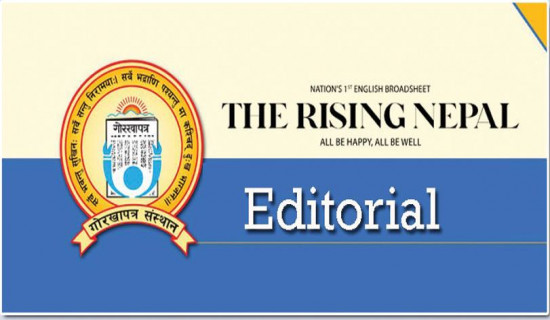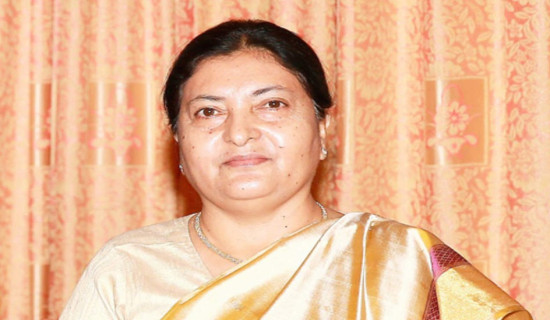- Tuesday, 21 October 2025
Nepal's Native Calendar
A variety of calendars have been mentioned in Nepali almanac. Although they have their own counting method and distinctive features, three – Bikram Sambat (BS), Anno Domini (AD), and Nepal Sambat (NS) – have found their practical importance. Though the first two originated outside the country, they dominate the calendar system here at present. This has given a rise to a general feeling that NS, which was indigenously started in the country's soil, has yet to get the recognition it so deserves. To put it bluntly, the NS should not be discriminated against on any ground.
Yet that hasn't stopped NS from being used. During the reign of the nation's unifier, late king Prithvi Narayan Shah, not only was it in use but also elevated to the status of national calendar, historians have claimed. Even after that, it had been in use at different periods, as mentioned by our history books. The NS and Sake Sambats are based on tithis, a unit of time according to lunar calendar. Because tithis vary from time to time, and NS has 354 days in a year in contrast to 365 days of the BS and the Gregorian calendar, it posed a difficulty to run day-to-day government works. To overcome this obstacle, the then Rana Prime Minister Chandra Shumsher in 1961 BS convened a meeting of astrologers and brought into use the BS from Baisakh, the first month in the BS. This laid the track for the BS and AD to grow in popularity in use, overshadowing NS and Sake Sambats.
Furthermore, there has been criticisms that the state discriminated against the NS citing it represented a particular community. But things are changing for the better and putting these long-standing debate to rest. Not only has the state recognised it as a national calendar, but it has also recently incorporated the calendar into government functions. Started by a national luminary Sankhadhar Sakhwa, the New Year in NS is fervently celebrated with fanfare in Kathmandu, Lalitpur, Bhaktapur, Kavre and other districts where sizeable Newar community resides.
According to the popular folklore, in A.D. 879, an astrologer from Bhaktapur had predicted that the sand at the confluence of the Vishnumati and the Bhadrāmati Rivers would turn into gold if collected at the auspicious moment. So King Ananda Malla, the then king of Bhaktapur, dispatched his workers to look for this special sand, who were witnessed by Sakhwa, then a local merchant. Sakhwa, out of curiosity, had only bought a small quantity of the sand from the king’s workers. To his astonishment, the next day, Sakhwa found that only his sand but not the king’s had turned into gold. Instead of being consumed by the allure of the precious metal and using for his own gain, he offered it to the king to pay off debts of Nepali people, giving the people as well as the king a reason to commemorate the era when this act of great generosity and compassion happened. This is how NS got started.
To popularise NS, there have been some dedicated endeavours. Two such efforts are the recently launched 'tithimiti.com' software and Nepal Sambat Mobile App developed by Spiralogics International. They have been handed over to the government by the Sankhadhar Foundation's chairperson Gyanram Shrestha and the company's chief engineer Arun Thapa. The software tools allow NS, BS and AD to be used simultaneously from anywhere. With this, hope has been raised that the whatsoever 'difficulty' in using NS will be elegantly overcome so that this indigenous calendar gains more ground and popularity in the future.

















